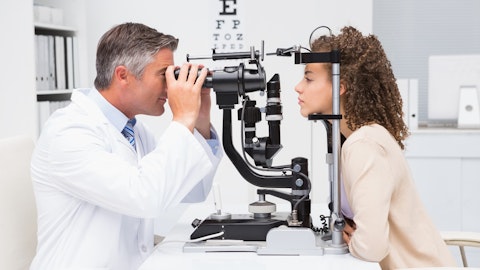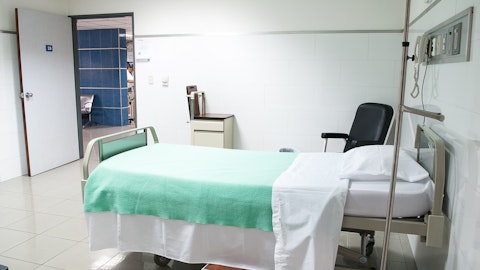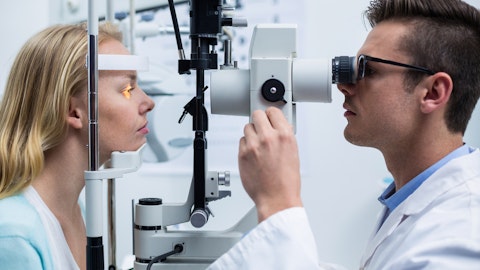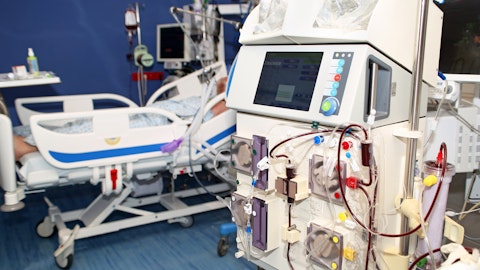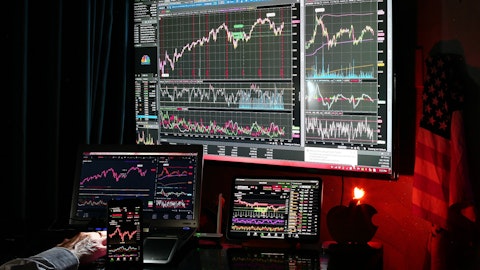Bio-Rad Laboratories, Inc. (NYSE:BIO) Q4 2022 Earnings Call Transcript February 16, 2023
Operator: Good afternoon, ladies and gentlemen. Thank you for attending today’s Bio-Rad Fourth Quarter and Full Year 2022 Earnings Results Conference Call. My name is Tia , and I will be your moderator for today’s call. I would now like to pass the conference over to your host, Edward Chung with Bio-Rad. Please proceed.
Edward Chung: Thanks, Tia. Good afternoon, everyone, and thank you for joining us today. Today, we will review the fourth quarter and full year 2022 financial results and provide an update on key business trends for Bio-Rad. With me on the call today are Norman Schwartz, our Chief Executive Officer; Ilan Daskal, Executive Vice President and Chief Financial Officer; Andy Last, Executive Vice President and Chief Operating Officer; Simon May, President of the Life Science Group; and Dara Wright, President of the Clinical Diagnostics Group. Before we begin our review, I would like to caution everyone that we will be making forward-looking statements about management’s goals, plans and expectations, our future financial performance and other matters.
These statements are based on assumptions and expectations of future events that are subject to risks and uncertainties. Included in these forward-looking statements are commentary, regarding the impact of the COVID-19 pandemic on Bio-Rad’s results and operations and steps Bio-Rad is taking in response to the pandemic. Our actual results may differ materially from these plans and expectations, and it is difficult to predict the full extent of potential impact the pandemic could have in the future. You should not place undue reliance on these forward-looking statements, and I encourage you to review our filings with the SEC, where we discuss in detail the risk factors in our business. The company does not intend to update any forward-looking statements made during the call today.
Finally, our remarks will include references to non-GAAP financials including net income and diluted earnings per share, which are financial measures that are not defined under Generally Accepted Accounting Principles. Investors should review the reconciliation of these non-GAAP measures to the comparable GAAP results contained in our earnings release. With that, I’ll now turn the call over to Ilan Daskal, our CFO.
Ilan Daskal: Thank you, Ed. Good afternoon, and thank you all for joining us. Before I begin the detailed fourth quarter and full year discussion, I would like to ask Andy Last, our Chief Operating Officer to provide an update on Bio-Rad’s global operations. Andy?
Andrew Last: Okay. Many thanks, Ilan. Good afternoon, everybody. As we enter Q4, we continued our focus on improving our supply chain situation. During the quarter some supply chain component constraints still persisted for a number of instruments, but overall were less problematic, and our primary focus was on production to meet demand. As a result, we made solid progress on reducing our backlog in the quarter. However, there was a resulting impact on product sales mix. And as expected, we still exited Q4 with an elevated backlog position for both our Life Science and Clinical Diagnostic businesses. Inventory levels remains high as we continue to source components to support demand, our manufacturing transition to Singapore, backlog reduction and better secure supply continuity through the coming year.
While still high logistics costs showed improvements in Q4, although higher cost of materials continued to persist from purchases earlier in the year. Despite the product supply challenges experienced throughout 2022, we have been extremely pleased with the level of customer support and willingness to work through our backlog with us. As anticipated during the quarter, the global effects of COVID on our business continued to diminish, and in particular COVID-related sales were roughly in line with our expectations. Overall operations within Bio-Rad were back to normal with the exception of China, where changing government policy from their previous zero-tolerance policy led to a large increase in infection rates impacting a significant percentage of the country and our employees.
This also had a negative effect impact on demand from our routine diagnostic tests in China. The fourth quarter also displayed continued strong demand trends across our portfolio and, in particular, we were very pleased with strong placements for the recently launched QX600 Droplet Digital PCR platform. Initial adopters include customers at the cutting edge of oncology research and testing such as Biodesix, a diagnostics company, which is developing a minimum risk residual disease test from Memorial Sloan Kettering Cancer Center on the platform. Also of note, during the fourth quarter, we entered into an exclusive licensing agreement with NuProbe to accelerate the development of next generation highly multiplex digital PCR assays for oncology applications.
As we enter 2023, we have now developed a strong pipeline across multiple customer segments for the QX600. And in conjunction with our portfolio of many thousands of assays, we expect to see continued strong growth of our Droplet Digital PCR portfolio in 2023. Q4 sales of our process chromatography franchise also displayed strong double-digit growth and we are pleased with the continued performance of this business and adoption of the recently launched pre-packed columns as well as increasing interest in our for new biological therapeutics and vaccines. Looking to our 2023 overall demand remains strong, and we continue to drive disciplined execution of our strategy. While we still have some challenges in supply chain, our primary activity is now on scaling production to reduce our instrument backlog and meet growing demand, particularly in the clinical diagnostics business.
And we anticipate backlog will be normalized in the second half of the year. Also in the back half of the year, we are planning for the introduction of 2 new platforms from our development pipeline, the QX Continuum, and our second generation single-cell platform. The Continuum represents a next generation Droplet Digital PCR system with an integrated workflow that’s designed to be cost effective. Our single-cell application targets the large single-cell multiomics market. With the COVID pandemic largely behind us, we do not anticipate any meaningful COVID-related sales in 2023. In addition, we continue to monitor the Russia and Ukraine war situation and potential for further sanctions and downside. Thank you for your attention. And I will now pass you back to Ilan.
Ilan Daskal: Thank you, Andy. Now, I would like to review the results of the fourth quarter and full year. Net sales for the fourth quarter of 2022 were $730.3 million, which is 0.3% decline on a reported basis, versus $732.8 million in Q4 of 2021. On a currency neutral basis, the year-over-year revenue growth was 5.8%. As expected COVID-related sales continued to taper and were about $13 million in the quarter. Year-over-year core revenue, which excludes COVID-related sales, increased 10.6% on a currency neutral faces. On a geographic basis, we experienced double-digit currency neutral year-over-year core revenue growth in the Americas and Asia, while Europe posted a more modest increase, primarily reflecting ongoing supply chain constraints for diagnostic products.
As Andy mentioned earlier, despite improvements in the supply chain, we estimate that we ended 2022 with an elevated order backlog of approximately $50 million, of which we expect to retain about $30 million. Sales over the Life Science Group in the fourth quarter of 2022 were $359.7 million, compared to $326.6 million in Q4 of 2021, which is an increase of 10.1% on a reported basis, and growth of 16.4% on a currency neutral basis. The underlying Life Science year-over-year currency neutral core revenue growth was 28.1% and benefited in part from the reduction of order backlog. The year-over-year growth was primarily driven by Droplet Digital PCR, process chromatography and Western blotting. We also saw good growth for our qPCR products in part driven by the uptake of our new CFX Opus platform.
We continued to experience strong initial customer interest and demand for our recently introduced QX600 ddPCR system. And we expect the more meaningful revenue contribution from this platform in 2023. Process chromatography which can fluctuate on a quarterly basis, again posted strong double-digit year-over-year growth. Excluding process chromatography sales, the underlying Life Science business grew 14% on a currency neutral basis versus Q4 of 2021, and was partially offset by lower COVID-related sales. When also excluding COVID-related sales, revenue growth was 27.1% on a currency neutral basis. On a geographic basis, Life Science experienced currency neutral year-over-year core revenue growth across all 3 regions. Sales of the Clinical Diagnostics Group in the fourth quarter were $369.6 million, compared to $404.9 million in Q4 of 2021, which is an 8.7% decline on a reported basis, and the 2.9% decline on a currency neutral basis.
Core clinical diagnostics year-over-year revenue, which excludes COVID-related sales, declined 1.9% on a currency neutral basis. Clinical Diagnostics Group revenue, which was primarily impacted by ongoing supply chain constraints, which delayed instrument placements across multiple platforms and the uptake of associated consumables. On a geographic basis, the Diagnostics group year-over-year currency neutral core revenue grew in the Americas, and declined in Europe and in Asia. In addition to supply chain constraints, Asia Pacific sales were also impacted by COVID dynamics in China, resulting in lower volume of routine testing. During the fourth quarter of 2022, we corrected 2 accounting policies, and believe these changes are a key material to our overall financials.
We determined that R&D expenses associated with developing and enhancing our cloud-based capabilities that incurred during the years 2020 through 2022 should have been capitalized. We revised our historical financial statements to reflect this correction, and it will be reflected in our 10-K filing. For full year 2022, the correction was about $5 million, or about 20 basis points headwind to gross margin, and the benefit of about $8 million, or about 30 basis points for operating margin. The benefit for the full year adjusted EBITDA margin is $15 million, or about 50 basis points. By comparison, the 2021 full year gross margin headwind is estimated to be about $3 million, or about 10 basis points, with an operating margin benefit of $11 million, or about 40 basis points, and adjusted EBITDA margin benefit of $15 million or 50 basis points.
In addition, we corrected our policy on the timing of revenue recognition related to certain equipment that requires the installation, and we believe that it contributed $5 million to $10 million of onetime revenue to the quarter. The reported gross margin for the fourth quarter of 2022 was 54.4% on a GAAP basis, and compares to 54.6% in Q4 of 2021. The fourth quarter year-over-year gross margin decline was mainly due to an unfavorable product mix, reflecting a higher percentage of instrument sales, lower COVID sales and higher raw material costs associated with supply chain constraints. Amortization related to prior requisitions recorded in cost of goods sold was $4.4 million as compared to $4.7 million in Q4 of 2021. SG&A expenses for Q4 of 2022 were $212.2 million or 29.1% of sales compared to $224.1 million or 30.6% in Q4 of 2021.
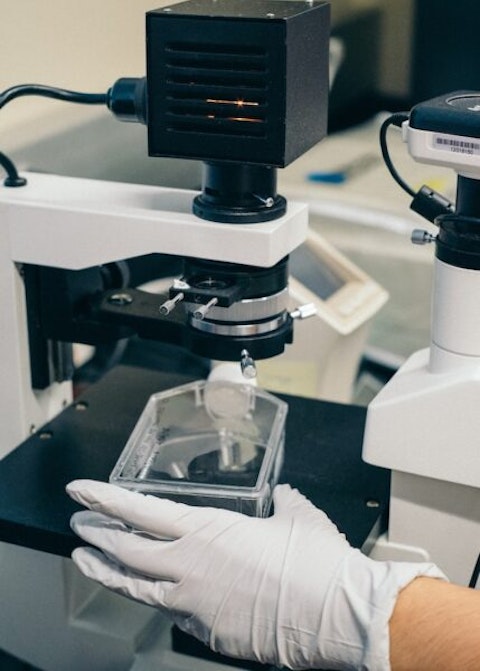
Photo by Jaron Nix on Unsplash
The year-over-year SG&A expenses decreased mainly due to the stronger dollar and normalized employee-related benefits, but was partially offset by higher discretionary spend. Total amortization expense related to acquisitions recorded in SG&A for the quarter was $1.7 million, versus $1.8 million in Q4 of 2021. Research and development expense in the fourth quarter was $66.2 million, or 9.1% of sales, compared to $66.9 million, or 9.1% of sales in Q4 of 2021, and consistent with our targeted R&D investment. Q4 operating income was $118.7 million, or 16.2% of sales, compared to $108.9 million, or 14.9% of sales in Q4 of 2021. Looking below the operating line, the change in fair market value of equity securities holdings, which are substantially related to Bio-Rad’s ownership of Sartorius AG shares added $979 million of income to the reported results.
During the quarter, interest and other income resulted in net other expense of $6.1 million compared to net other income of $7.5 million last year. Q4 of 2022 included a $14.4 million charge associated with an investment impairment. Overall, we generated $16.6 million in interest income during the fourth quarter from our cash balance, partially offset by $11.7 million in interest expense related to our $1.2 billion notes. The effective tax rate for the fourth quarter of 2022 was 24.2% compared to 22.8% for the same period in 2021. The effective tax rate recorded in Q4 of 2022 was partially affected by an unrealized gain in equity securities. And the tax rate reported in Q4 of 2021 was primarily affected by an unrealized loss in equity securities.
Reported net income for the fourth quarter was $828 million or $27.78 diluted earnings per share, compared to a loss of $1.572 billion or a diluted loss per share of $52.54 in Q4 of 2021. This increase from last year is largely related to changes in the valuation of the Sartorius Holdings. Moving on to the non-GAAP results. Looking at the results on a non-GAAP basis, we have excluded certain atypical and unique items that impacted both the gross and operating margins, as well as other income. These items are detailed in the reconciliation table in the press release. Looking at the non-GAAP results for the fourth quarter. In cost of goods sold, we have excluded $4.4 million of amortization of purchased intangibles and a small restructuring benefit.
These exclusions moved the gross margin for the fourth quarter of 2022 to a non-GAAP gross margin of 54.9% versus 55.2% in Q4 of 2021. Non-GAAP SG&A in the fourth quarter of 2022 was 28.5% versus 30.2% in Q4 of 2021. In SG&A, on a non-GAAP basis, we have excluded amortization of purchased intangibles of $1.7 million and in vitro diagnostic registration fee in Europe for previously approved products of $2.5 million, acquisition-related benefit of $500,000 and $700,000 of legal expenses as well as restructuring related expenses. Non GAAP R&D expense in the fourth quarter of 2022 was 9.1% versus 9.4% in Q4 of 2021. In R&D on a non-GAAP basis, we have excluded a small restructuring benefit. The cumulative sum of these non-GAAP adjustments result in moving the quarterly operating margin from 16.2% on a GAAP basis to 17.4% on a non-GAAP basis.
This non-GAAP operating margin compares to a non-GAAP operating margin of 15.7% in Q4 of 2021. We have also excluded certain items below the operating line, which are the increase in value of the Sartorius equity securities and loan receivable of $979 million, a $14.4 million loss associated with an investment impairment, and $1.7 million loss on venture investments. The non-GAAP effective tax rate for the fourth quarter of 2022 was 28.1%, which is consistent with our full year tax rate guidance compared to 20.4% for the same period in 2021. The higher rate in 2022 was driven by geographical mix of earnings. And finally, non-GAAP net income for the fourth quarter of 2022 was $98.5 million or $3.31 diluted earnings per share, compared to $98.5 million or diluted earnings per share of $3.26 in Q4 of 2021.
Moving on to the full year results. Net sales for the full year of 2022 were $2.802 billion, which is a 4.1% decline on a reported basis as compared with $2.923 billion in 2021. On a currency neutral basis, full year 2022 net sales increased by 0.3%, and when also excluding in 2021, a onetime $32 million settlement for bake royalties from 10x. Sales in 2022 grew 1.5% on a currency neutral basis. COVID-related sales for the full year were about $109 million, compared to $266 million in 2021. Year-over-year core revenue, which excludes COVID-related sales and the legal settlement, increased 7.2% on a currency neutral basis. Sales of the Life Science Group for 2022 were $1.347 billion, excluding the 2021 legal settlement, the year-over-year growth was 2.7% on a currency neutral basis, when excluding COVID-related sales and the 2021 legal settlement, Life Science year-over-year currency neutral core revenue growth was 15.2%.
The majority of the year-over-year core growth was driven by Droplet Digital PCR, process chromatography, our qPCR products and Western blot. On a geographic basis, Life Science currency neutral full year core revenue grew across all three regions. Sales of Clinical Diagnostics products for 2022 were $1.451 billion, which is 0.4% growth on a currency neutral basis, when excluding COVID-related sales, Clinical Diagnostic year-over-year currency neutral core revenue growth was 1.3%, which was impacted by supply chain constraints. On a geographic basis, Clinical Diagnostics currency neutral full year core revenue grew in the Americas and Europe, while sales declined in Asia primarily due to COVID lockdowns in China. As mentioned earlier, the year ago comparisons for gross operating and adjusted EBITDA margin have been modestly revised due to our adoption of capitalized internal use software accounting.
The full year non-GAAP gross margin was 56.6% compared to 57.2% in 2021. The year-over-year margin decline was driven mainly by product mix, lower COVID sales, higher logistics and expedited freight costs, as well as higher raw material costs. Full year non-GAAP SG&A expense was $805.4 million or 28.7% of sales compared to $824 million or 28.5% in 2021. The lower SG&A spend benefited from a strong dollar and more normalized employee-related costs somewhat offset by higher discretionary expenses. Full year non-GAAP R&D expense €“ R&D was $256.7 million or 9.2% of sales versus $247.6 million, or 8.6% in 2021. And full year non-GAAP operating income was 18.7% compared to 20.1% in 2021, largely due to the various impacts of our supply chain constraints during the past year.
Lastly, the non-GAAP effective tax rate for the full year of 2022 was 22%, which was consistent with our guidance range and compares to 21.2% in 2021. Moving on to the balance sheet, total cash and short-term investments at the end of 2022 was $1.796 billion compared to $875 million at the end of 2021 and $1.856 billion at the end of the third quarter of 2022. The change in cash and short-term investments for the third quarter of 2022 was primarily due to working capital and share repurchases. Inventory at the end of Q4 reached $719.3 million from $685.9 million in the prior quarter. The increase in inventory continues to reflect our supply chain constraints, and is mainly due to carrying higher levels of raw materials. As we anticipate further easing in our supply chain constraints in 2023, we would expect to lower inventory levels over the next 8 quarters.
For the fourth quarter of 2022, net cash generated from operating activities was $79.7 million, which compares to $161.1 million in Q4 of 2021. This decrease mainly reflects changes in working capital. For the full year of 2022, net cash generated from operations was $194.4 million versus $669.5 million in 2021. This decrease also mainly reflects changes in working capital. During the fourth quarter, we purchased 241,000 shares of our stock for a total cost of $91 million or an average purchase price of approximately $376 per share. As we continue to be opportunistic with our share buyback program. We still have a total of approximately $207 million available under the current Board authorized program. Full year share buybacks totaled 497,000 shares for approximately $216 million.
In 2021, we purchased about 90,000 shares of our stock for $50 million. Adjusted EBITDA for the fourth quarter of 2022 was 21.4% of sales. The adjusted EBITDA in Q4 of 2021 was 19.5%. Full year adjusted EBITDA, including the Sartorius dividend was $667.9 million, or about 23.8% compared to 24.6% in 2021. Net capital expenditures for the fourth quarter of 2022 were $34.7 million and full year CapEx spend was $112.6 million. Depreciation and amortization for the fourth quarter was $35.5 million and $137.3 million for the full year. Moving on to the non-GAAP guidance for 2023, while the supply chain constraints have created a more than anticipated challenge during 2022, we believe that it is transitory, and does not change our thinking about our 2025 financial outlook.
We expect that our backlog backorder dynamics will continue to normalize. And as I mentioned earlier, we assumed to recover in 2023, about $30 million of the order backlog from 2022. We are guiding a currency neutral revenue growth in 2023 to be between 6% and 7%. Starting in 2023, we do not anticipate breaking out COVID-related sales, as its contribution becomes immaterial to our overall revenue base. When excluding the 2022 COVID-related sales, we estimate currency neutral revenue growth in 2023 to be between 10% and 11%. The Life Science Group year-over-year currency neutral revenue growth is expected to be between 8% and 9%. When normalizing for 2022 COVID-related sales, we expect to be between 16% and 18% currency neutral year-over-year revenue growth for the Life Science Group.
For the Diagnostics Group, we estimate currency neutral revenue growth of about 5%, as we expect supply chain constraints to normalize in 2023. When excluding COVID-related sales, we expect revenue growth between 5% and 5.5% for the Diagnostics Group. Due to the elevated order backlog during 2022, we realized about 1% price improvement, which was below the inflationary trends in our overall costs. For 2023, we assume price increase realization between 1.5% and 1.8%, mainly within the Life Science Group. Full year non-GAAP gross margin is projected to be about 57% in the first half of 2023 and improving to 58% towards the end of the year, as we cycle through higher material cost embedded in our inventory, and we expect our logistics costs to normalize.
Full year non-GAAP operating margin is projected to be approximately 19.5%. We estimate the non-GAAP full year tax rate to be between 22% and 23%. CapEx is projected to be approximately $180 million as we plan to complete our ERP implementation in Asia, as well as capacity expansion to support our multiyear growth strategy. Finally, full year adjusted EBITDA margin is expected to be about 25%. And now, I’ll turn the call over to Norman for a few remarks. Norman?
Norman Schwartz: So, thank you, Ilan, I guess, I would say that after 3 pandemic influenced years, it is really encouraging to see signs of returning to a €“ what I think of as a more normalized business environment. As you might imagine, everybody here is really looking forward to putting the challenges of the last few years behind us. And, I guess, I would add that the muscle building and improvements that we made as a result during this time, I think, we’ll continue to be valuable for us going forward. So I think about the macro view a little bit even though China and Russia, as Andy mentioned earlier, continue to be a little bit challenged, it would appear that most of our markets around the world, we’ll be strong in 2023 really supported by a kind of a solid funding environment around our targeted market.
I think, overall, we are certainly pleased with the progress that we’re making on our strategic initiatives. And, I think, it’s fair to say we have a robust pipeline of products and development to support our ambitions going forward. So, we’re continuing and also to evaluate opportunities to add to our portfolio in organically, so a lot to look forward to.
Ilan Daskal: Operator, that concludes our prepared remarks and we’ll now open the line to take your questions.
See also 21 Best Dating Apps of 2023 and 15 Largest Steel Producing Countries in the World.
Q&A Session
Follow Bio-Rad Laboratories Inc. (NYSE:BIO BIOB)
Follow Bio-Rad Laboratories Inc. (NYSE:BIO BIOB)
Operator: We will now begin the Q&A session. The first question comes from the line of Patrick Donnelly with Citi. Please proceed.
Patrick Donnelly: Hey, guys, thank you for taking the question. Ilan maybe first €“ Andy as well, just on the guidance, pretty healthy Life Science number there, 16 to 18 ex the COVID. Can you just talk about the growth drivers there? How much of that is maybe some of that backlog catch-up? And also maybe just the pacing across the year, obviously, a lot goes into between COVID and comps, it would be helpful. Just to get your perspective about the right way to think about that piece and, again, maybe some of the growth drivers that play into it.
Andrew Last: Yeah. Hi, Patrick. Thanks for the question. Andy here. So as we look at 2023 revenue overall, let me just break it down between the 2 business areas. So, overall, I would say the strategic drivers of revenue growth remain consistent with our digital PCR platform, process chrom continued growth in that platform area. And we’re also going to benefit from new PCR products that were launched during the past year, and we’ve got some more coming during 2023. I think, our focus on biopharma penetration, where we’re largely underrepresented still is also a very significant driver, as we look to our growth in Life Science. And as a backdrop, we see Life Science funding broadly being positive, and in all regions of the world.
And so that’s our general story on Life Science as I look to the clinical business. Really, it’s a continued growth of quality controls, continued share gains in immunohematology business. We’ve had some recent wins there, and we’ve got a growing demand pipeline. I would say also continued growth in Asia Pac and, in particular, kind of recovery in China more in the second half of 2023. Backlog reduction will be a feature in more the first half of the year. And, I think, it was mentioned in our script that Clinical has probably got the larger of the backlog challenge as we enter 2023. But we have really clear line of sight now. Q4 was still a bit challenging for us. And growth will kind of improve through the year for the business overall. So, I think that that’s pretty much a wrap-up of how we’re looking at 2023.
Patrick Donnelly: Okay. That’s very helpful. And then maybe to your point there in terms of early in the year, a little bit of the supply chain, a little bit of China, can you just talk about the impact you saw in 4Q, it seemed like the diagnostics piece, clearly, some headwinds, both from shipping delays, and probably China. Maybe just talk through, I guess what you saw there in terms of the impact, and then the expectation, how much of this lingers into 1Q, particularly maybe the China piece? What the right way to think about that is?
Andrew Last: Yeah, as we’ve mentioned before, the ability to overcome the supply chain constraints in the Life Science is much easier than the Clinical side of the business, and that did persist for us through Q4. And then, Q4 in China with the change in government policy that reflects, that kind of basis represented both supply chain challenge as well as some demand drop off. So China didn’t really perform quite as expected for us in Q4. As we go into Q1 really our focus is on production, the improvement in volume on our instrument platforms to meet the backlog burned down and growing demand. And so, it’s less a component issue for us now on the clinical business, it is much more ramping the volume of production as we go. And when we believe that’s the first half phenomena for us.
